#hindu brahmins
Text
The Indian Brahmins took the memorization of the Vedas very seriously, and developed means to ensure accuracy and the careful reproduction of the same words and sounds from generation to generation. Careful, even exact oral replication of the Vedas was part of the Hindu faith, institutionalized during the learning process and maintained through peer observation and pressure through the life of a Brahmin. This community of faithful Brahmins was large and they all went through the same learning process, which was standardized to some degree. Deviation from the ... path of exact replication would have brought powerful forces of censure to bear on the offender...
The noted Sanskritist J.A.B van Buitenen told me that in the eighteenth and nineteenth centuries the Europeans who were learning Sanskrit were impressed by the fact that no matter where they went in the subcontinent, when they heard Brahmins recite the Vedas they heard the exact same thing. From Peshawar to Pondicherry, or Calcutta to Cape Comorin, hundreds of thousands, even millions, of Brahmins who had no direct contact knew these texts in precisely the same way...
— Gregory L. Possehl, Indus Age: The Beginnings
#hinduism#hindu#sanskrit#sanskrit language#brahmin#brahmins#indian brahmins#hindu brahmins#priesthood#priest#ancient india#india#memory#religion
11 notes
·
View notes
Text



Happy Chithirai Puthandu ✨
#kollywood#jodhadreams#jodha dreams#bollywood#tamil#tollywood#south indian#sareestyle#sareeblogger#indianwoman#tamilbrahmin#brahmin#iyer#iyengar#tamilnadu#hindufestival#hindu woman#hindusim#hindu culture#indian outfit#indian painting#sareenotsorry#sareee#indian sarees#saree#sareecollection#sareeoftheday
23 notes
·
View notes
Note
hey so i hope you don't mind me saying this. you often say that desi tumblr is very casteist as of late. do you have any proof? as in screenshots of posts? it's not that i do nt believe you, i do i just need something to show my uc moots on tumblr to show them that casteism is indeed a problem on this site (sincerely, a well meaning uc ally)
[[Well, a lot of the casteism in desiblr is very covert and in the form of dogwhistles and I don't blame someone who is not trained to look for them to miss the signs. Honestly, I have blocked a lot of desi blogs over their casteist views and I don't have the mental spoons to go through my entire Tumblr blocklist searching for them (which is miles long thanks to the many many many pornbots also being there. Thanks for nothing Tumblr!)
But fuck, one blog that is branded in my head for the sheer vitriol and overt casteism is @/desi-stree
I am not a fan of call out posts but damn, some people need to be named and shamed really]]

[[This is her reply as a part of a longer post. The person above, whom she is replying to is a Dalit speaking about her experiences as a Dalit in the Hindu community and this privileged UC calls her and other Dalits "brainwashed" for going through the traumatic first hand experience of caste based discrimination.
Translation of the Hindi text:
I wasn't going to cuss you* out, but you forced my hand into this, I haven't seen a bigger cunt than you]]
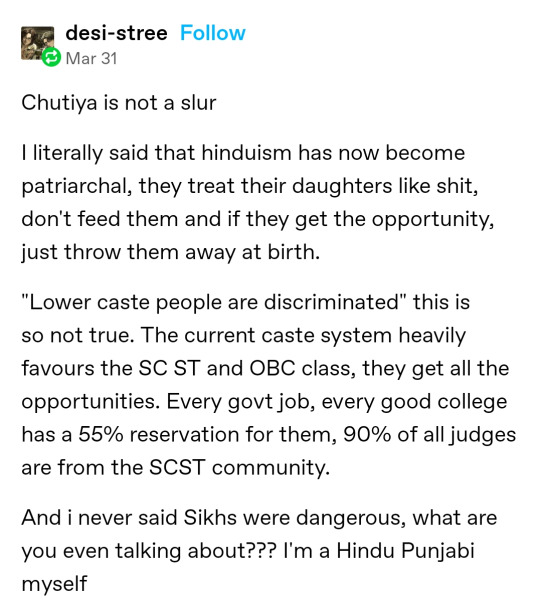
[[You heard it guys, lower castes are the ones oppressing the savarnas now #NewIndia 😂😂😂
Please ignore all the vigilante justice and lynching and murder and rape and untouchability and bullying to the point of suicide committed against the Dalits]]
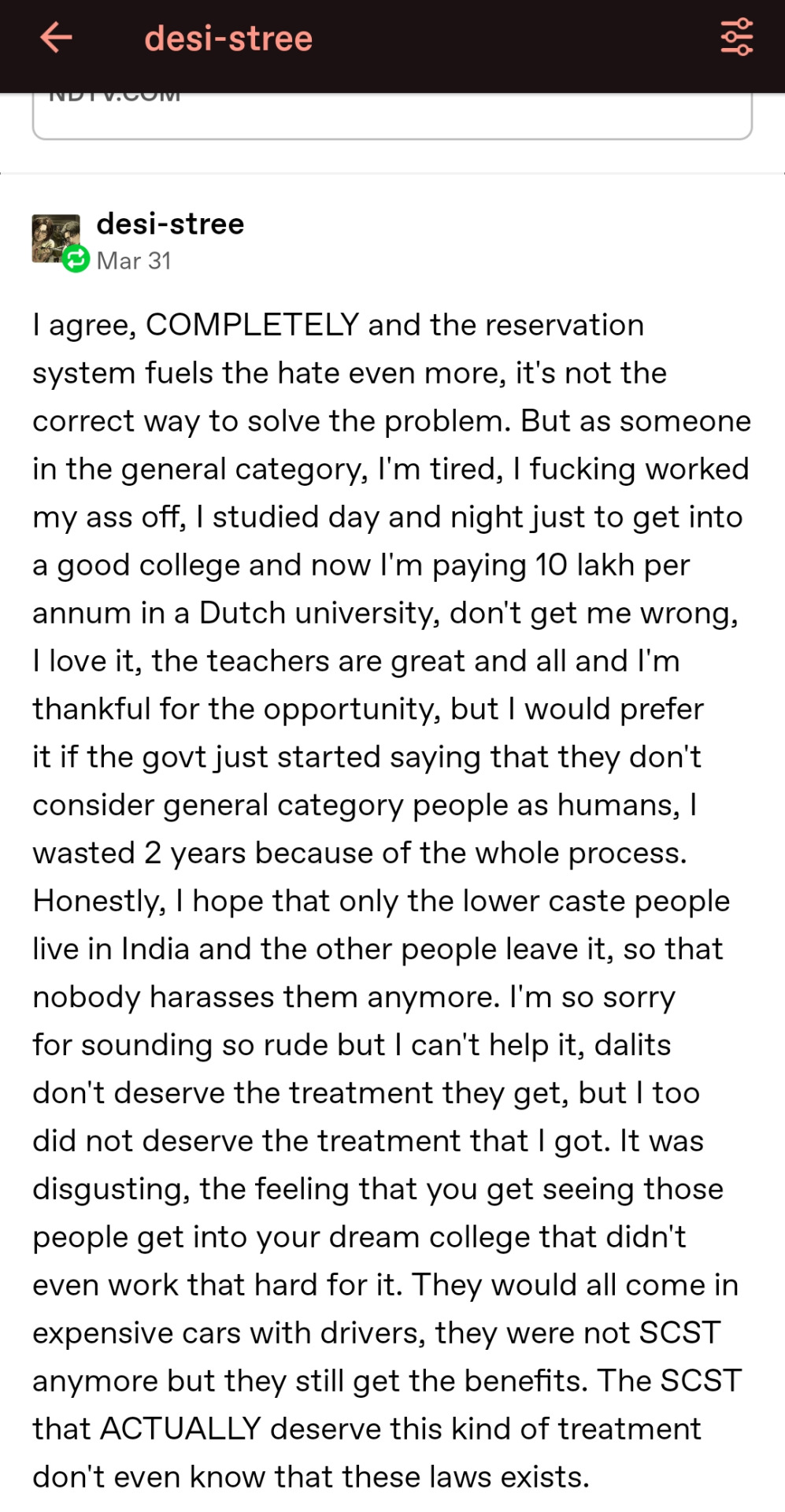
[[Omg Savarna girl is so oppressed for having to study in a premium foreign university after paying a fortune. How tragic 😔
Apparently, the fact that casteism exists in society is the fault of the heavily marginalized group for availing themselves of a completely legal, government approved affirmative programme to uplift them
Honestly, I hope that only the lower caste people live in India and the other people leave it
Girl just took casteist segregation to a whole another level and thinks that she made a valid point what the fuck
They would all come in expensive cars with drivers, they were not SCST anymore but they still get the benefits
I should buy a car next year and hire a driver because apparently that erases the caste that I carry everywhere in my literal fucking surname]]
[[Oh, and do you know the cherry on the top of this cake? She is a T/ERF]]


[[The real kicker of this whole shitshow is that I see her (more innocuous sounding) posts in a lot of desi blogs. Either they don't care about the casteism and blatant transphobia or they agree with her views. I don't know which is worse.]]
#casteism#caste#dalit#savarna privilege#desiblr#desi#india#original post#not incorrect quotes#anon#ask#ask me anything#anonymous#desi tumblr#desi stuff#desi tag#hinduism#hindu#hindublr#brahmin supremacy#brahmin privilege#brahminism#transphobia#long post#caste discrimination
113 notes
·
View notes
Text
idk what hindutva bigot needs to hear this but literally nothing and no one will ever be as good at vilifying hinduism than hindus themselves.
saying this as a hindu who regularly goes to temple.
#desiblr#desi tumblr#desi#caste system#caste discrimination#hindutva#anti hindutva#anti bjp#anti modi#caste is a nightmare and i say this as a daughter of general caste members#we're not brahmins but we're definitely not oppressed by any means#we need to address the real harm that people are doing in the name of our religion and revise the obvious discrimination in our texts#all while supporting dalit and muslim voices in india#we can be hindus without being casteists#hinduism#hindu#hindublr
49 notes
·
View notes
Text
Brahmin supremacy
Social hierarchy: The Brahmins established a social hierarchy in which they occupied the topmost position, giving them immense power and control over other communities and perpetuating systems of oppression.
Caste system: Brahmins created and maintained the caste system, which divided society into rigid hierarchies based on birth. This system reinforced Brahmin dominance and enabled them to control the resources and opportunities available to different groups.
Caste-based violence: The Brahmins perpetuated violence against lower caste communities, particularly Dalits, through the caste system, which allowed for institutionalized discrimination and violence.
Marriage practices: The Brahmins established strict rules around marriage and family structures, which helped to perpetuate their social and economic power.
Religious monopoly: Brahmins claimed a monopoly over religious knowledge and practice, which allowed them to control and manipulate the spiritual lives of others. This further reinforced their social and political power.
Religious hegemony: The Brahmins established themselves as the custodians of religious knowledge and texts, giving them significant influence over religious practices and beliefs across South Asia.
Cultural appropriation: The Brahmins appropriated and assimilated elements of indigenous cultures and traditions, erasing the contributions of other communities and further consolidating their power.
Intellectual property: The Brahmins often appropriated the knowledge and intellectual property of other communities, erasing their contributions and further consolidating their own power and influence.
Education: The Brahmins monopolized education, particularly in the pre-colonial period, creating a system that privileged their knowledge and excluded other communities from accessing educational opportunities.
Education: Brahmins controlled access to education and knowledge, which further reinforced their social and economic dominance. They monopolized education and ensured that only members of their own caste could become scholars, priests, and teachers.
Land ownership: Brahmins acquired vast amounts of land through various means, such as gifts from kings or temples, and used their wealth and power to further consolidate their control over society.
Land ownership: The Brahmins, particularly in colonial times, acquired large tracts of land, often through exploitative means, consolidating their economic and political power.
Language and literature: The Brahmins established Sanskrit as the language of knowledge and literature, excluding other languages and literary traditions from the mainstream.
Language dominance: Brahmins promoted the use of Sanskrit, which was the language of the elite and the language of many Hindu religious texts. This gave them further linguistic dominance and helped to consolidate their cultural and political power.
Political influence: The Brahmins have played a significant role in shaping political structures and institutions across South Asia, often to their own advantage.
Systematic exclusion of lower castes from religious and social institutions
Appropriation of land and resources from indigenous communities
Imposition of Sanskrit as the language of power and knowledge, leading to the neglect and suppression of other regional languages and cultures
Establishment of a rigid caste system, with Brahmins at the top and other castes relegated to lower social status and economic opportunities
Monopolization of education and intellectual discourse, leading to the suppression of dissenting voices and alternative knowledge systems
Co-optation of indigenous spiritual practices and beliefs, leading to the marginalization and erasure of non-Brahmin religious traditions
Control over political power and governance through the Brahminization of the state
Promulgation of patriarchal norms and practices, leading to the subjugation and exploitation of women and other gender minorities
Promotion of vegetarianism as a moral and ethical ideal, leading to the marginalization and stigmatization of non-vegetarian communities
Use of violence and coercion to maintain Brahmin hegemony and suppress dissenting voices and movements
Creation of a cultural hegemony that has influenced and shaped the social, political, and economic structures of South Asia for centuries
Control over the production and dissemination of knowledge, leading to the suppression of alternative epistemologies and worldviews
Consolidation of economic power through the control of trade networks and commercial enterprises
Implementation of discriminatory and oppressive laws and practices against lower castes and non-Brahmin communities
Maintenance of a system of inherited privilege and power that has perpetuated Brahmin domination across generations
Control over religious and cultural practices, leading to the erasure and marginalization of non-Brahmin traditions and beliefs
Construction of a narrative of Brahmin superiority and moral authority, leading to the internalization of caste-based discrimination and oppression by non-Brahmin communities
Establishment of a culture of fear and intimidation, leading to the suppression of dissenting voices and the perpetuation of Brahmin hegemony
Appropriation and commercialization of cultural artifacts and practices, leading to the exploitation and erasure of indigenous communities and traditions
Creation of a caste-based system of labor and economic exploitation, leading to the marginalization and impoverishment of lower castes and non-Brahmin communities.
#brahmin#hindu#hinduism#hindutva#india#jai hind#south asia#religion#brahmin supremacy#brahminization#meluhha#indus valley#dalit#bahujan#tamil#dravidian
24 notes
·
View notes
Text
How to welcome a learned Brahmin - Vedic Tradition
#vedic #vedicastrology #astrology #jyotish #astrologer #hinduism #hindu #india #spirituality #vedicastrologer #astro #spiritual #horoscope #numerology #astrologyposts #bestastrologer #love #yoga #zodiac #vedas #vastu #astrotips #astrologersofinstagram #meditation #krishna #vedicknowledge #jyotishastrology #horoscopes #numerologist #astroworld
Know more about #Hinduism from here: https://bhagavanbhakthi.com/
2 notes
·
View notes
Photo

An elderly Brahmin waiting at the mandapam at kapali temple, near the water tank. Hoping and waiting for someone to approach him requesting that he perform some ritual. #hinduism #elderly #seniorcitizen #brahmin #love #hindu #seniors #india #seniorliving #elderlycare #aging #assistedliving #family #god #hanuman #retirement #brahman #healthcare #memorycare #seniorcare #eldercare #photography #instagram #sanatandharma #jaishreeram #shiva #instagood #photooftheday #hindutemple #photo https://www.instagram.com/p/CqMi1Y4SxTI/?igshid=NGJjMDIxMWI=
#hinduism#elderly#seniorcitizen#brahmin#love#hindu#seniors#india#seniorliving#elderlycare#aging#assistedliving#family#god#hanuman#retirement#brahman#healthcare#memorycare#seniorcare#eldercare#photography#instagram#sanatandharma#jaishreeram#shiva#instagood#photooftheday#hindutemple#photo
7 notes
·
View notes
Text
Cow and house warming
On the occasion of house warming as per Indian culture and tradition worshiping of cow is done. It is called gho pooja or Govardhana pooja. The part of the ritual is, they feed cow jaggery, fruits, rice and in devotion owner moves three times clockwise around it, an indication of reverence. Without performing this Gho pooja, house warming function is incomplete. In India cow is considered as a very sacred animal.
#Cow#Gho mata#culture#tradition#India#Indian culture#family love#celebration#South India#House warming#pooja#Gho pooja#Govardhana pooja#Brahmins#Hindus#Hindu#festivities#iskcon#hindudharma#hinduism#lord shiva#krishna#hindutva#Telangana#andhra pradesh#Mumbai#Navi Mumbai
25 notes
·
View notes
Text
.
#fuck this country there's jobless brahmins proposing bills that will ban muslims and christians from voting#oppressed hindus like hindu women and queer people jave got to realise that they're not safe from this either and that hindutva is coming#for their asses too lol#(and these jobless brahmins are seers and clergymen obviously)
8 notes
·
View notes
Text
The most trivial decision that has haunted me the longest is when my friend Tara (the one getting married) decided my first name (over long, starts with a Ch) was too difficult to pronounce and gave me the nickname Chitra. 13 years later I’m still being introduced to family and friends as ‘Tara ki America se university dost, Chitra’ but my deepest shame is that the name Chitra is really difficult for me to pronounce 😭😭😭😭😭
#not even something moon related like Chandani for my nascent homosexuality like damn#I got reverse-white’d by the creme de la crème of Hindu Brahmins there are just so many jokes to be made#Egg talks#for all intents and purposes my name to you heathens is phd candidate Egg
2 notes
·
View notes
Text
Some of the organizations’ Hinduphobia campaigns have been directed against opposition to the Indian caste system—which often comes from Dalit activists from that system’s lowest stratum.
Downplaying caste oppression is central to the Hindu nationalist project.
Historically, some anti-caste leaders have argued that caste-oppressed people should reject Hinduism, which has long relegated them to its margins.
Dalit journalist Suprakash Majumdar notes that such anti-caste struggles have the potential to threaten Hindus’ claim to majority status in India, which is foundational to the Hindutva ideology.
Hindu nationalist leaders also tend to come from the dominant castes and continue to benefit from the entrenched hierarchy both in India and in the diaspora."
#hinduism#hindu fascism#hiindutva#bjp#rss#islamophobia#genocide#india#caste system#brahminism#israel#usa
12 notes
·
View notes
Text
Varahamihira: The ancient astrologer, astronomer and mathematician
His encyclopaedic knowledge and his lively presentation of subjects, as dry as astronomy, made him a celebrated figure.
writes MEERA S. SASHITAL.
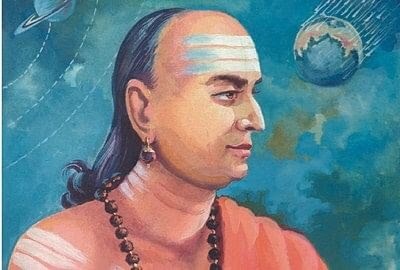
Even thousands of years before, India had become famous and reached its pinnacle in astrological and astronomical sciences. Ancient Astrological works had been translated into many foreign languages. Ibn Batuta and Al Baruni were two prominent Arab travellers who had visited ancient India specially to pursue Astrology. By their translations they had induced German scholars to come to India to study Astrology and Vedic literature. Varahamihira was one of the only renowned Indian Astronomer, Mathematician and Astrologer whose name became a household word throughout India and it is said his near contemporaries Aryabhata and Brahmagupta even did not match with the popularity of Varahamihira.
Varahamihira was born in 499 A.D. into a family of Brahmins settled at Kapittha, a village near Ujjain. His father, Adityadasa was a worshipper of the Sun god and it was he who taught Varahamihira astrology. On a visit to Kusumapura (Patna) young Varahamihira met the great astronomer and mathematician, Aryabhata. The meeting inspired him so much the he decided to take up astrology and astronomy as a lifetime pursuit. At that time, Ujjain was the centre of learning, where many schools of arts, science and culture were flourishing in the prosperity of the Gupta reign. Varahamihira, therefore, shifted to this city, where scholars from distant lands were gathering. In due course, his astrological skills came to the notice of Vikramaditya Chandragupta ii, who made him one of the Nine Gems of his court.
It is interesting to note as to how Varaha-mihira got the title ‘Varaha’. King Vikramaditya was aghast at the royal astrologer Mihira’s prediction. He looked round the well-lit and crowded court and asked in anguish “Can it be true?” There was no reply. There was pin-drop silence as all were shocked beyond words at the royal astrologer’s prediction. Breaking the silence and with full of grief himself, the royal astrologer confirmed the prediction, “The position of the planets predicts the death of the prince at the age of18.” Though the King controlled his emotions, the Queen could not contain herself and wailed “My lord, you should see to it that this prediction proves false.”
Though the King had full faith in his astrologer Mihira, he took every precaution to protect and save his son. But on the predicted day, a boar killed the prince. When the news reached the King, he summoned Mihira to his court and told him “I am defeated, you have won, you have won.” The astrologer was as sad as the king, and he replied “My Lord. I have not won. It is the science of astronomy and astrology that has won!” “Whatever it may be, my respected astrologer,” said the King. “It has convinced me that your science is nothing but truth. And for your mastery of the subject, I now confer upon you the Magadha kingdom’s greatest award, the emblem of the varaha (boar).” So from that time Mihira came to be known as Varahamihira.
Varahamihira was learned in the Vedas, but he was not a blind believer in the supernatural. He was a scientist. Like Aryabhata before him, he declared that the earth was spherical. In the history of science he was the first to claim that some “force” might be keeping bodies stuck to the round earth. The force is now called gravity.
Scholars are of the view that Varahamihira had constructed “Meru Stambh”, what is presently famous as Qutub Minar, 2200 years ago, for doing research on astronomy. It was a seven storied structure constructed in the middle of a lake. These seven stories symbolized seven planets and the structure also had 27 windows symbolizing twenty-seven constellations. Black stone has been used in the construction of Meru Stambh so that there was darkness inside. The main entrance faces North and is slanted slightly backward towards South at an angle of five degrees. Its foundation is 26 yards deep and its actual height was 84 yards but which now has been reduced to 76 yards. Britishers had demolished the topmost storey to prevent the structure from falling as the slant was more prominent at the top and it caused threat to the structure.
Varahamihira’s main work is the book Pancha Siddhantika (“Treatise on the five Astronomical Canons gives us information about older Indian texts which are now lost). The work it seems is a treatise on mathematical astronomy and it summarises five earlier astronomical treatises, namely, the Surya Siddhanta, Romaka Siddhanta, Paulisa Siddhanta, Vasishtha Siddhanta and Paitama Siddhanta. Panch Siddhanta holds a prominent place in the realms of astronomy. He proposed that the Moon and planets are lustrous not because of their own light but due to sunlight. It is acclaimed that Pancha Siddhantika of Varahamihira is one of the most important sources for the history of Hindu Astronomy from before the time of Aryabhata.
Another important contribution of Varahamihira is the encyclopaedic Brihat-Samhita. It covers wide ranging subjects of human interest, including astrology, planetary movements, eclipses, rainfall, rainfall, clouds even domestic relations, gems, pearls and rituals. The volume expounds on gemstone evaluation criterion found in the Garuda Purana, and elaborates on the sacred Nine Pearls from the same text. It contains 106 chapters and is known as the “great compilation”.
Being an Astrologer he wrote on all the three main branches of Jyotisha astrology. It covered Brihat Jataka which is considered as one of the five main treatises on Hindu astrology on Horoscopy; Laghu Jataka, Samasa Samhita, Brihat Yogayatra, Yoga yatra, Tikkani Yatra, Lagu Vivaha Patai,Daiiivajna Vallabha (apocryphal). His son Prithuyasas also contributed in the Hindu Astrology; his book Hora Sara is famous book on Horoscopy.
Varahamihira’s mathematical work included the discovery of the trigonometric formulas. He improved the accuracy of the sine tables of Aryabhata l. He defined the algebraic properties of zero as well as of negative numbers. Furthermore, He was among the first mathematicians to discover a version of what is now known as the Pascal’s triangle. He used it to calculate the binomial coefficients.
Varahamihira made some significant observations in the field of ecology, hydrology and geology too. His claim that plants and termites serve as indicators of underground water is now receiving attention in the scientific world. He was also a prolific writer. His mastery of Sanskrit grammar and poetic metre enabled him to express himself in a unique style. His encyclopaedic knowledge and his lively presentation of subjects, as dry as astronomy, made him a celebrated figure. His treatise such as Pancha Siddhantika (Five Principles), Brihatsamhita (Master Collection), Brahjataka (Astrological work) have put him on as high a pedestal in Astrology as Kautilya’s in Political philosophy, Manu’s in Law or Panini’s in Grammar.
It is learnt, Varahamihira humbly said about his own treatises: “The science of Astrology is a vast ocean and is not easy for everyone to cross it. My treatises provide a safe boat.” Truly, even now they are acknowledged as masterpieces.
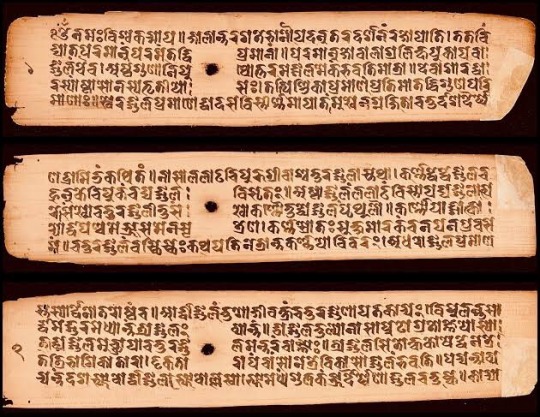


#Varahamihira#The Ancient#Ancient#Astrologer#Astronomer#Mathematician#Encyclopaedic#Aryabhata#Brahmagupta#499 A.D#Brahmins#Kapittha#Village#Ujjain#Patna#hinduism#hindus#hindudharma#Mihira#Queen#King#Prince#Lord#Maurya#aryabhatta#Astrology#sanatana
8 notes
·
View notes
Quote
The Great Famine of 1900, known in popular parlance as chhappaniyo, (referring to Vikram Era 1956) set in motion the migration of not only peasant communities but Dalits as well. Realizing the limit of land based activity, the peasant communities began diversifying into modern sectors – commerce, industry and technical education. Even the Brahmins and Banias from Hindu upper castes and Muslims with a trading background – Bohra, Khoja and Memon – were part of this trend. A few took the route to Africa and Fiji. The combined impact of such migration resulted in greater urbanisation within Gujarat and the expansion of a prosperous Gujarati diaspora. The second wave of migration from rural Gujarat started in mid-20th century after land reform measures were initiated by the Congress government in Bombay and Saurashtra states. In 1911, less than 20% of the population of Gujarat was concentrated in urban areas and of that only 18% resided in two cities with more than 100,000 population. By 1951, 27% of the population was urbanised and of that 36% was concentrated in six cities with more than 100,000 population.
Achyut Yagnik, ‘The pathology of Gujarat’ (2002)
#Achyut Yagnik#India#Gujarat#peasant migration#famine#Dalit migration#peasant diversification#commerce#industry#technical education#Brahmins#Banias#Hindu upper castes#Muslim traders#Bohras#Khojas#Memons#Africa#Fiji#Gujarati diaspora#urbanisation#rural Gujarat#land reforms#Congress government#Bombay#Saurashtra
4 notes
·
View notes
Text
Pretending that casteism doesn't exist doesn't make it magically go away. It simply allows casteism to be perpetuated in invisibility
#casteism#caste#dalit#brahmin privilege#brahminism#savarna privilege#india#desiblr#desi#hindublr#hindu#hinduism#desi stuff#desi tag#original post#not incorrect quotes#jai bheem
33 notes
·
View notes
Photo
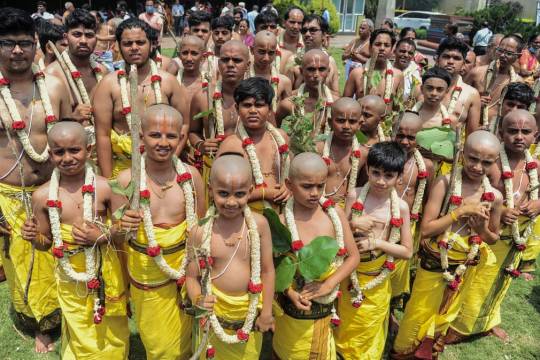
Bangalore, India: Hindu boys from the Brahmin community take part in a mass Upanayana (sacred thread) ceremony, which is performed to symbolise their initiation into formal Vedic education.
Photograph: Manjunath Kiran/AFP/Getty Images
5 notes
·
View notes
Photo
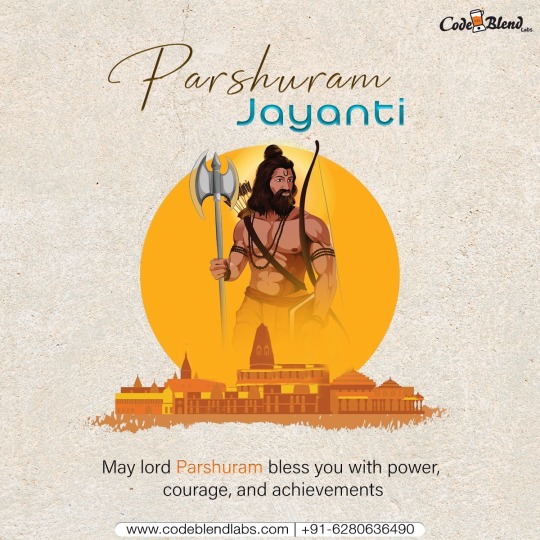
May you be blessed with the power and courage of Lord Parshuram! Happy Parshuram Jayanti!
.
.
#codeblendlabs#parshuramjayanti#brahman#parshuram#pandit#brahmanraaj#jaiparshuram#hindu#bhudev#tyagi#brahmins#brahmansamaj#bholenath#parshuramvanshi#brahmanwaad#india
4 notes
·
View notes